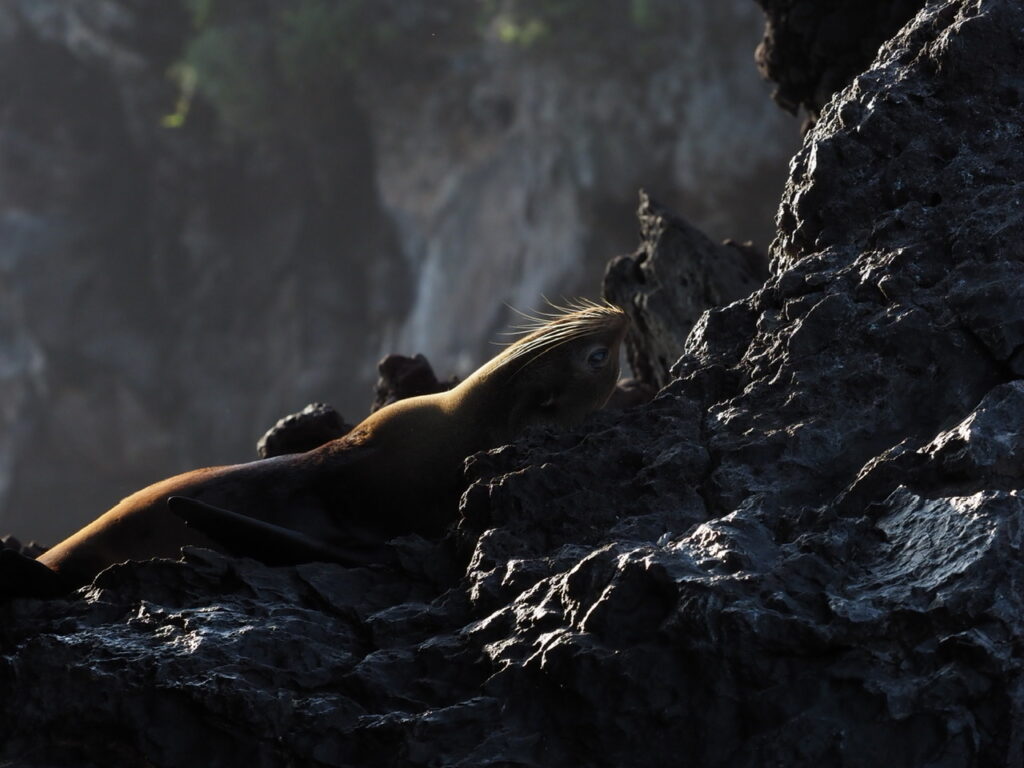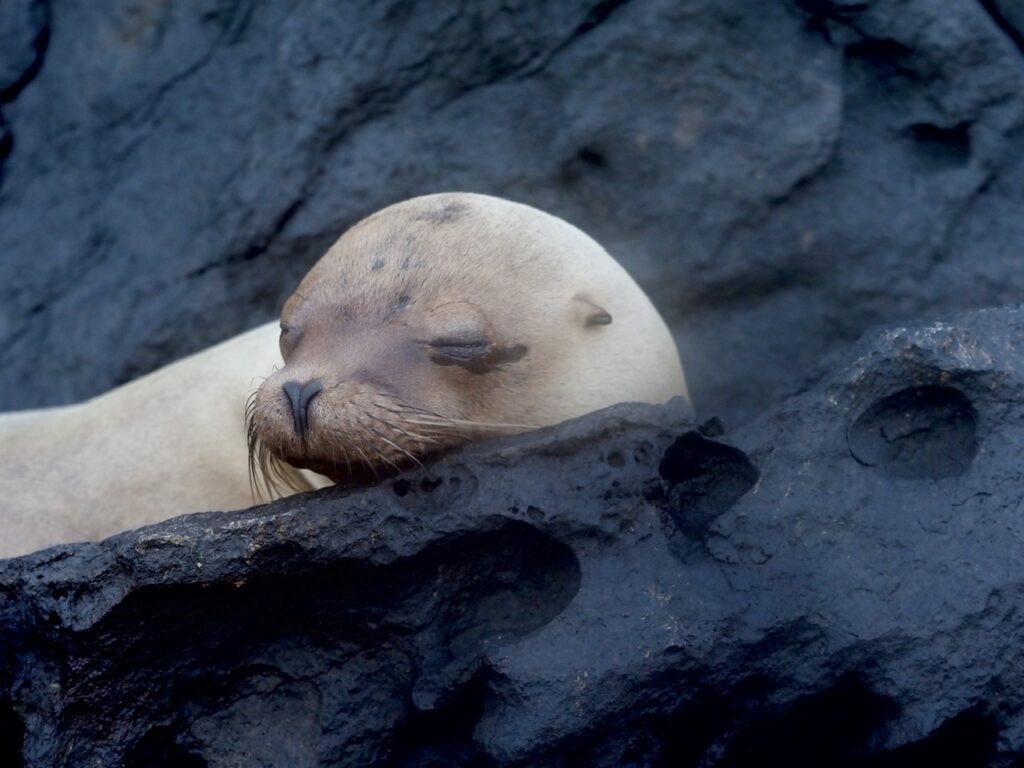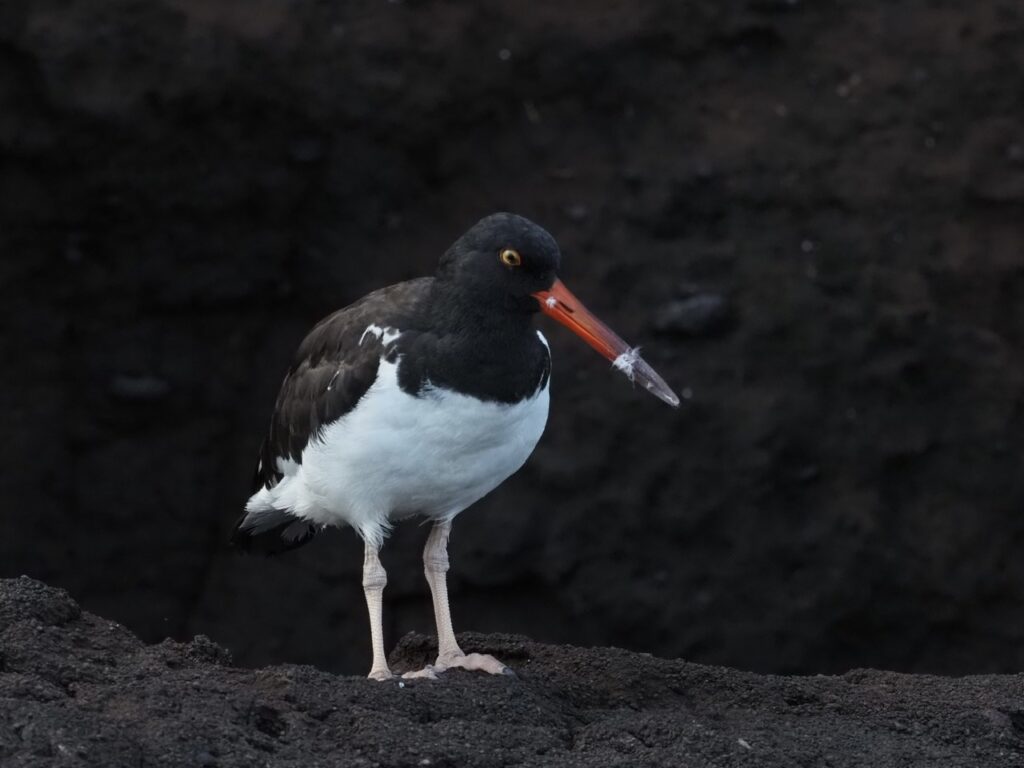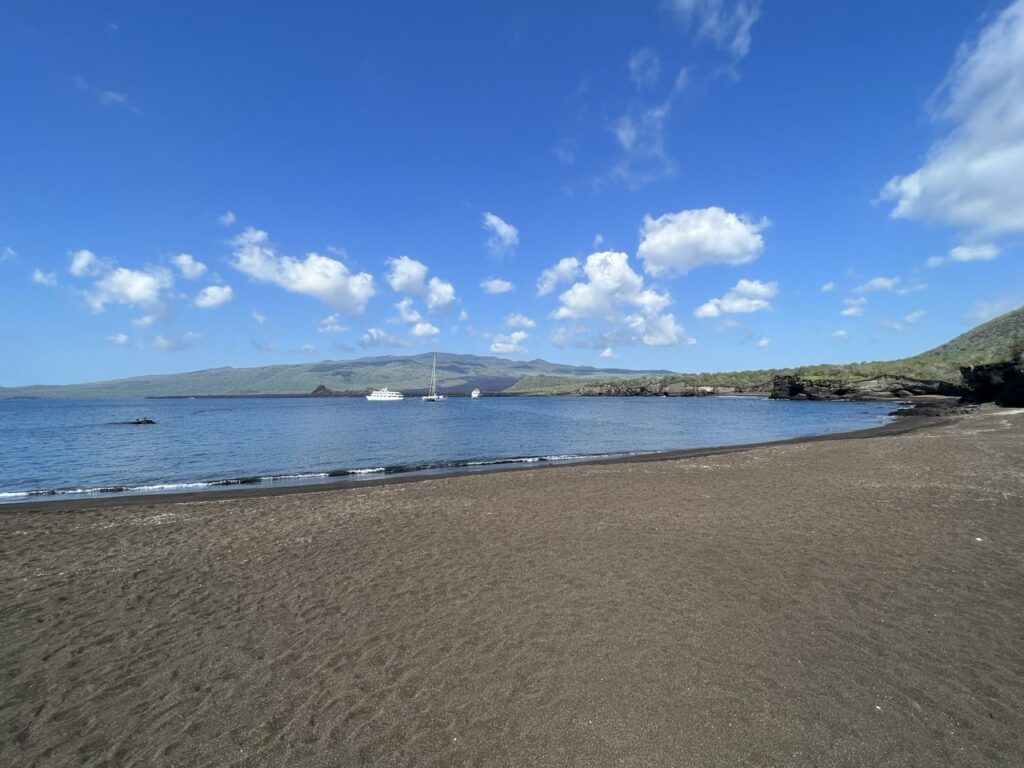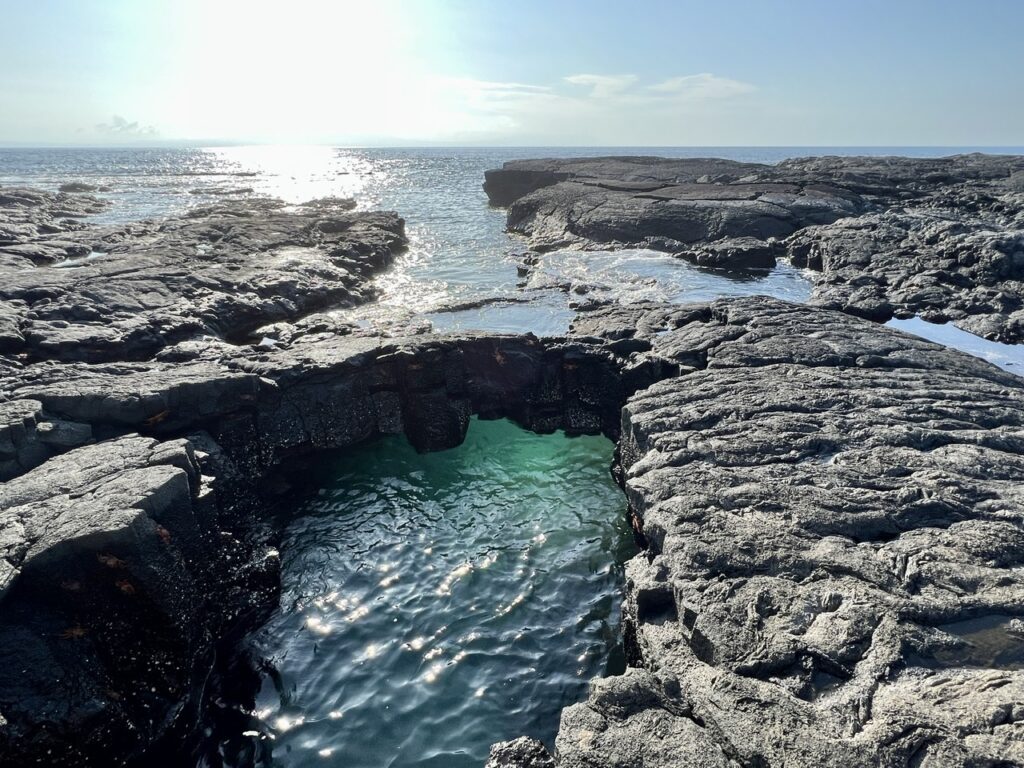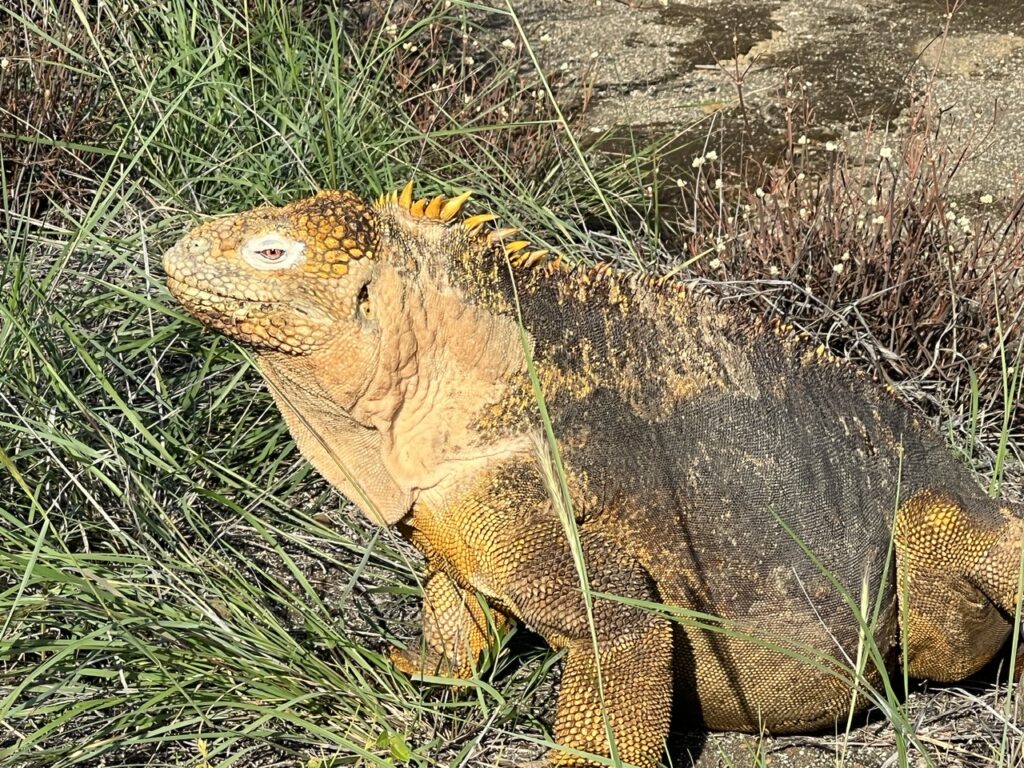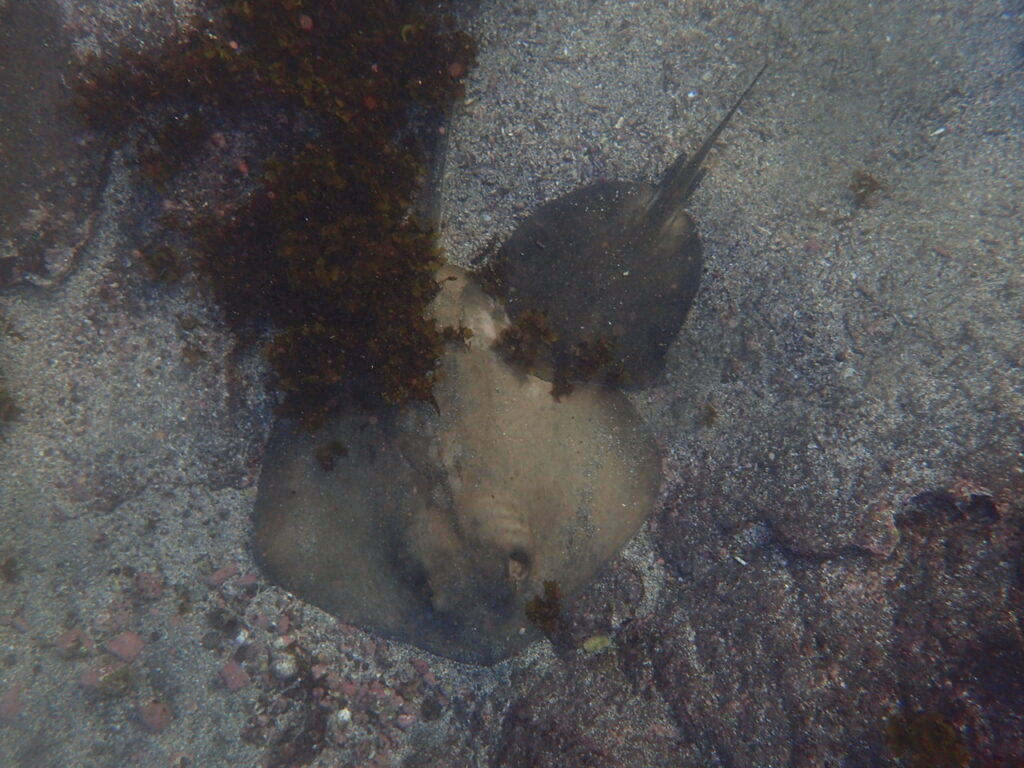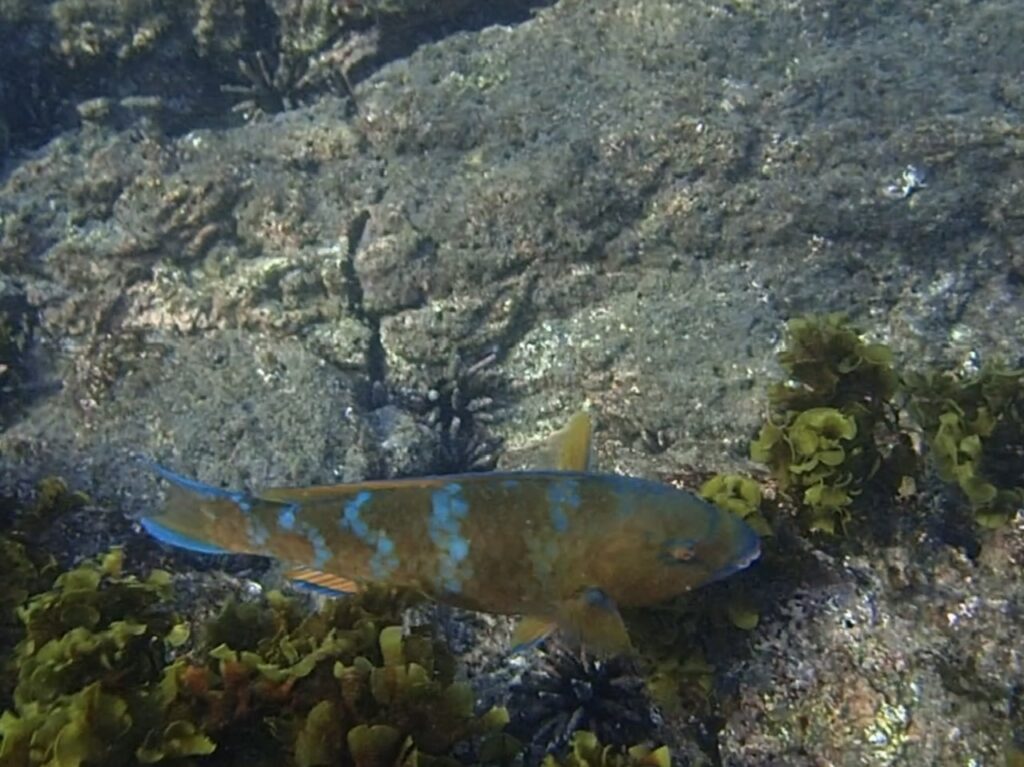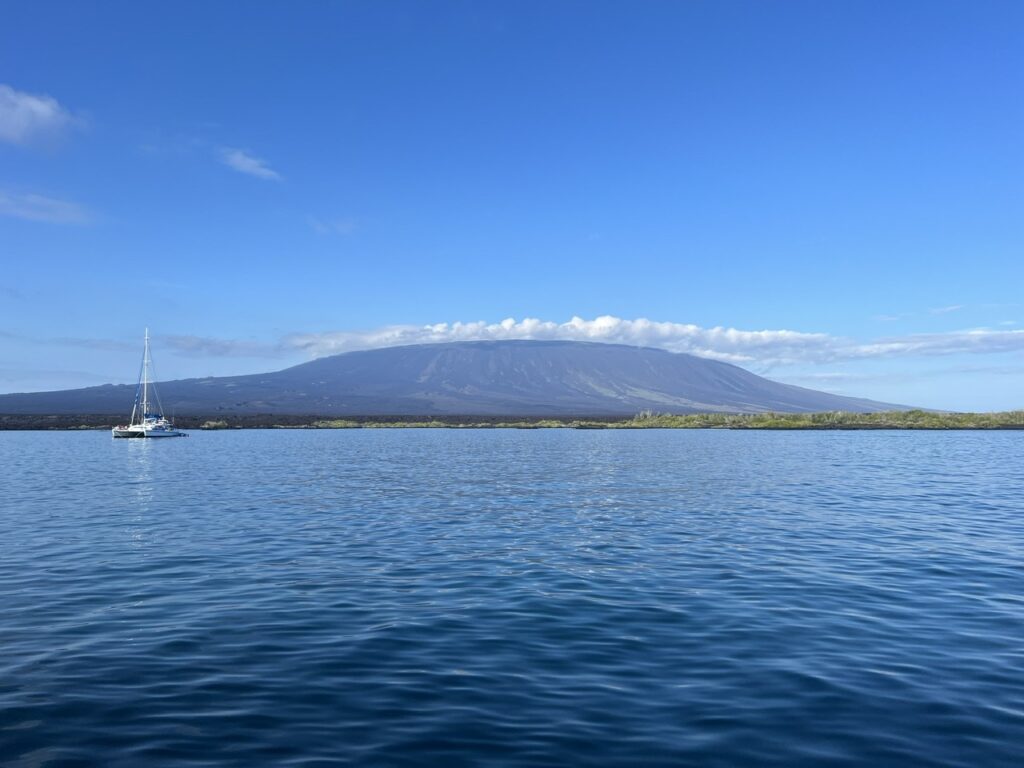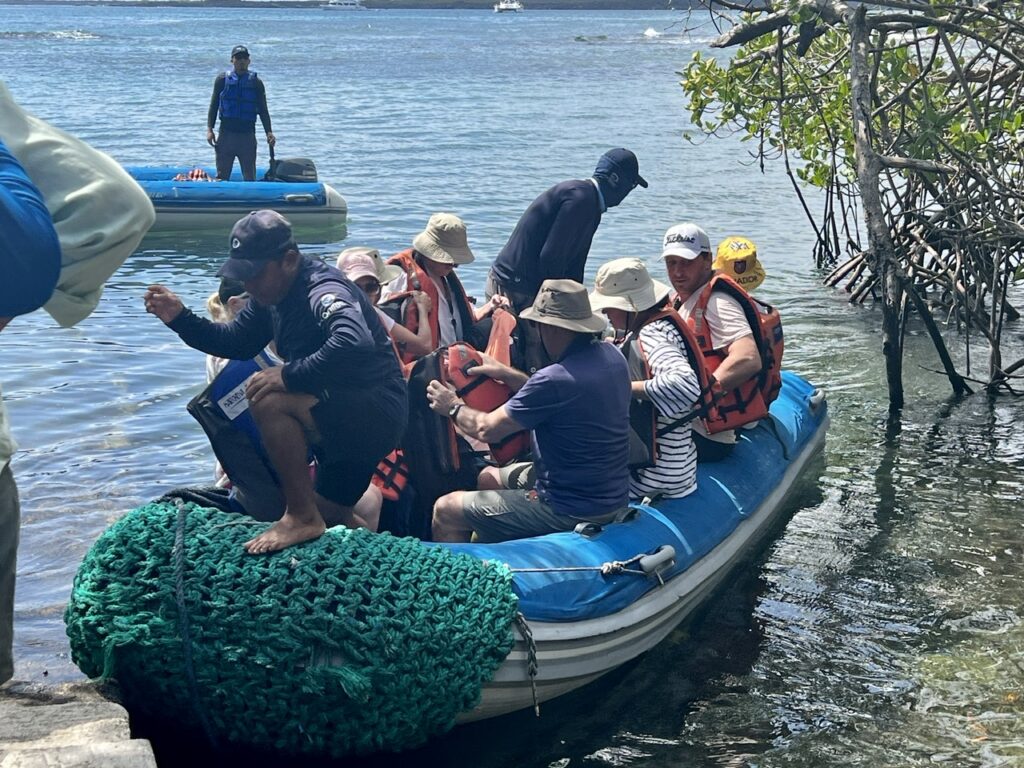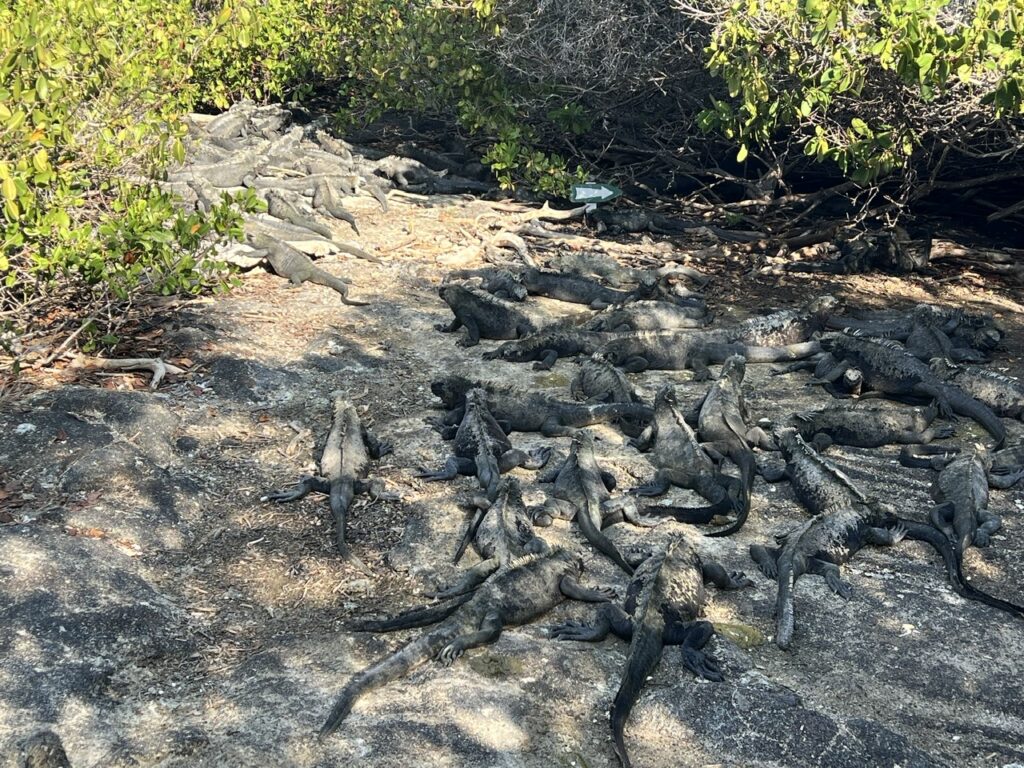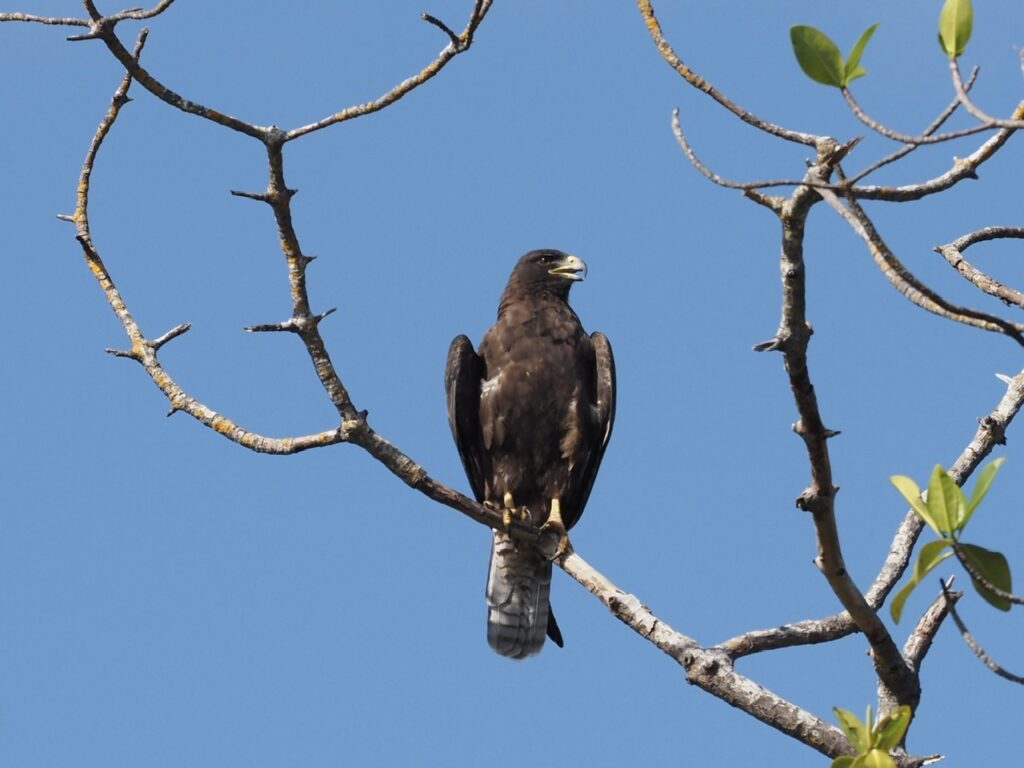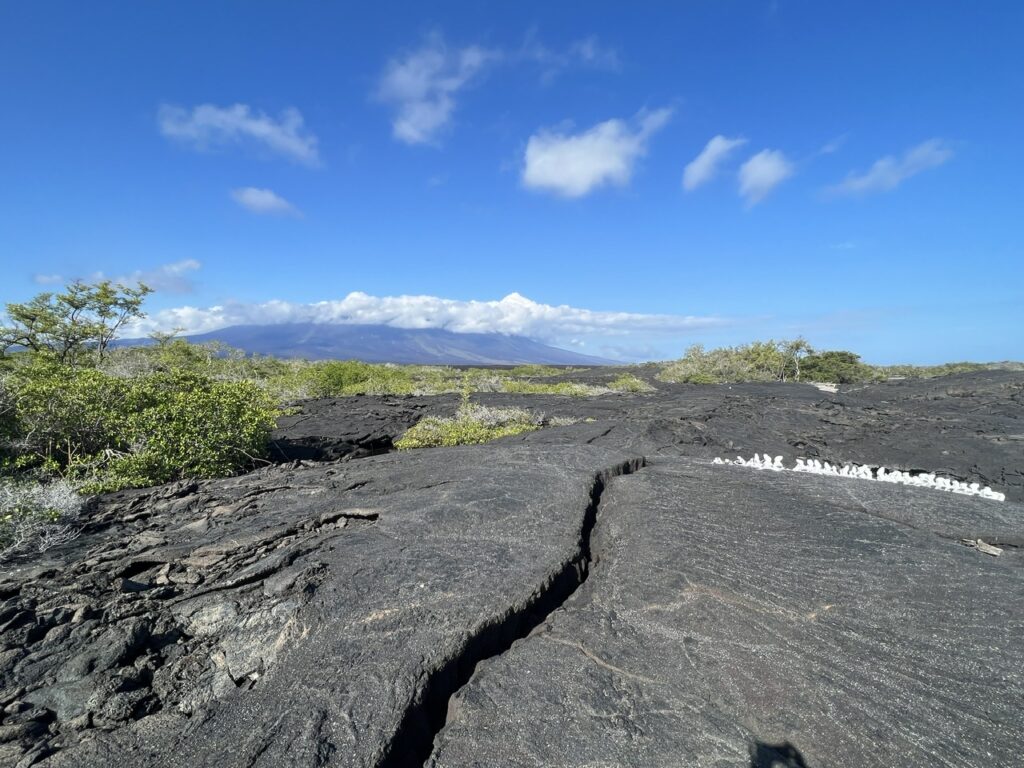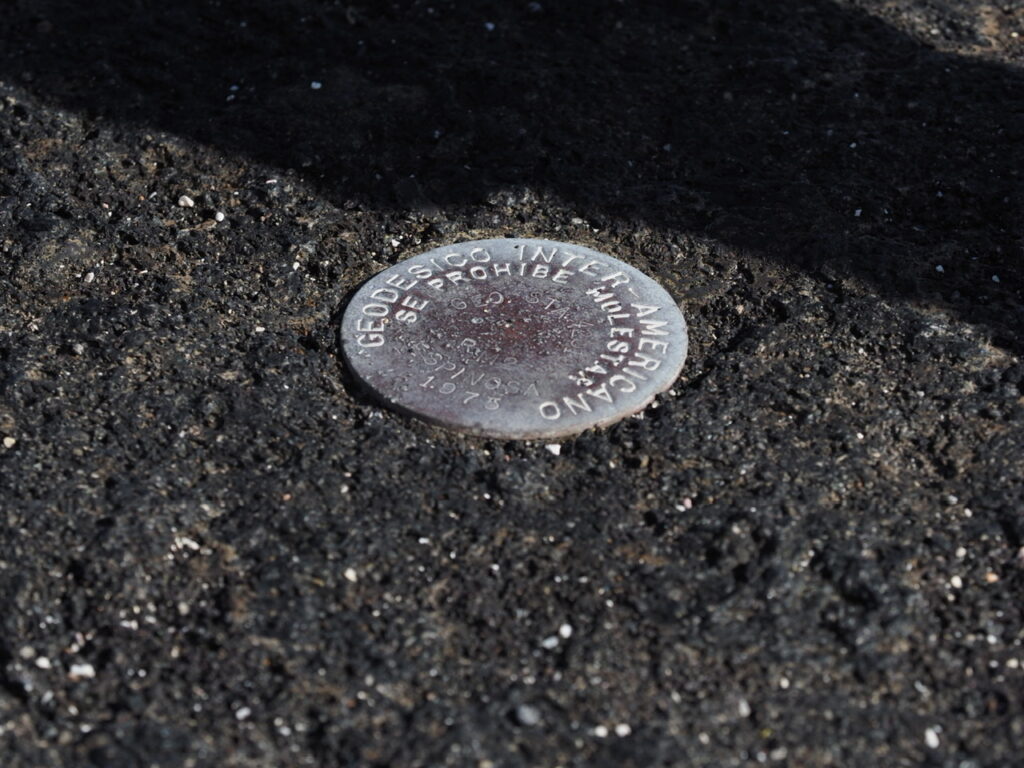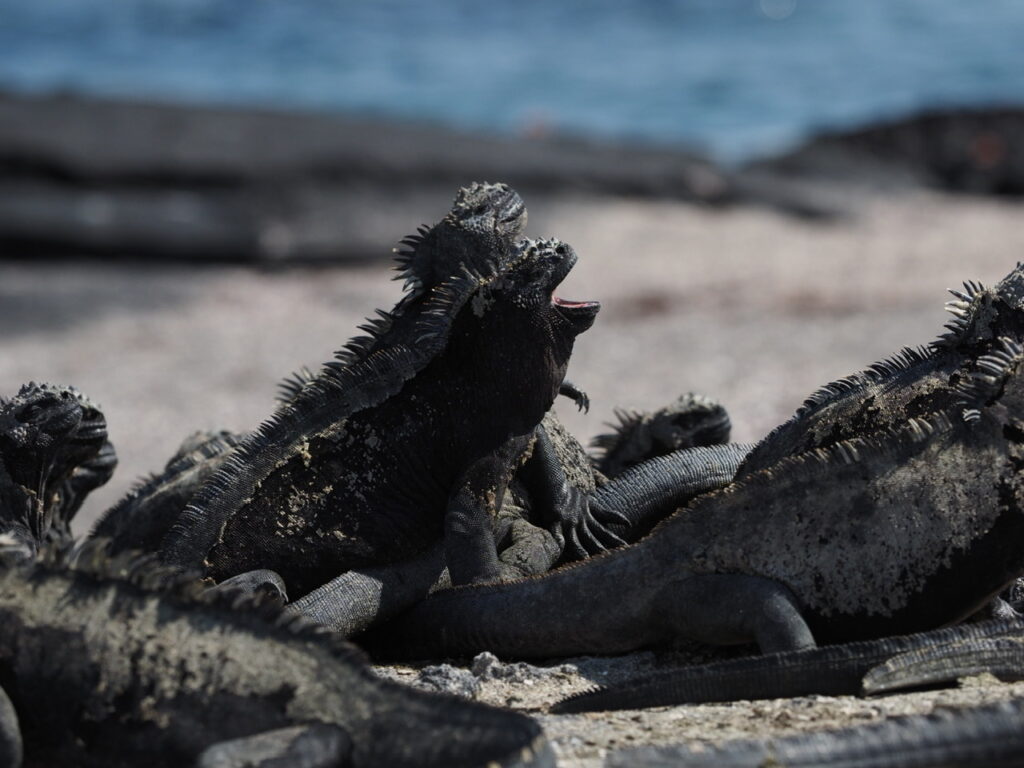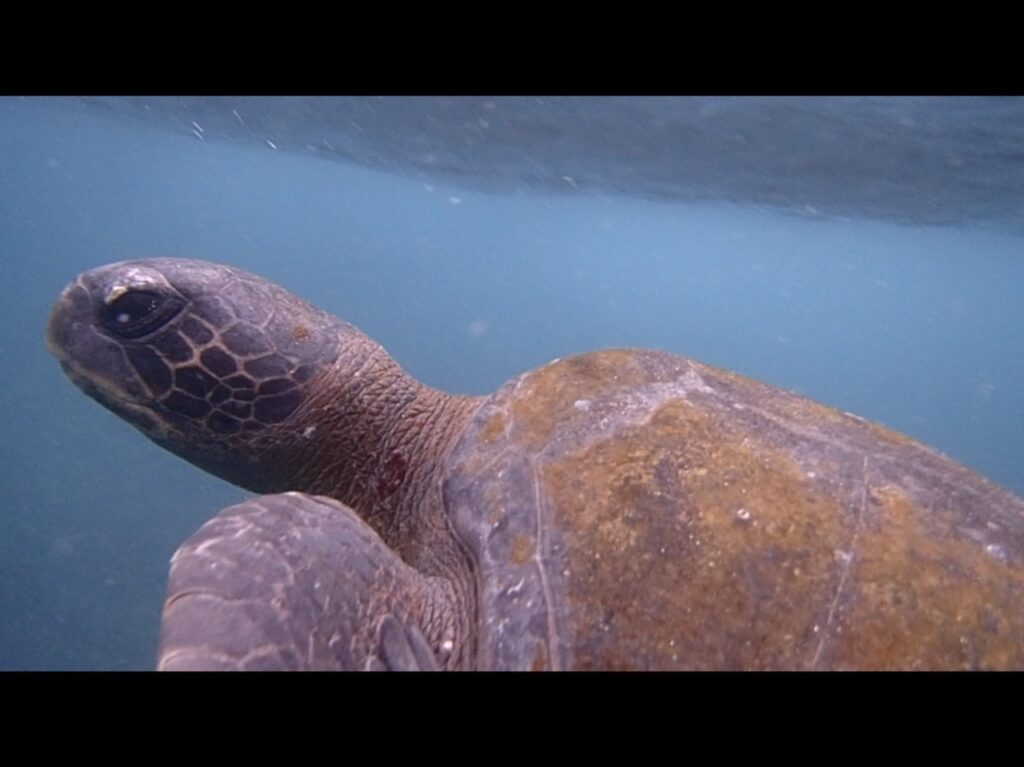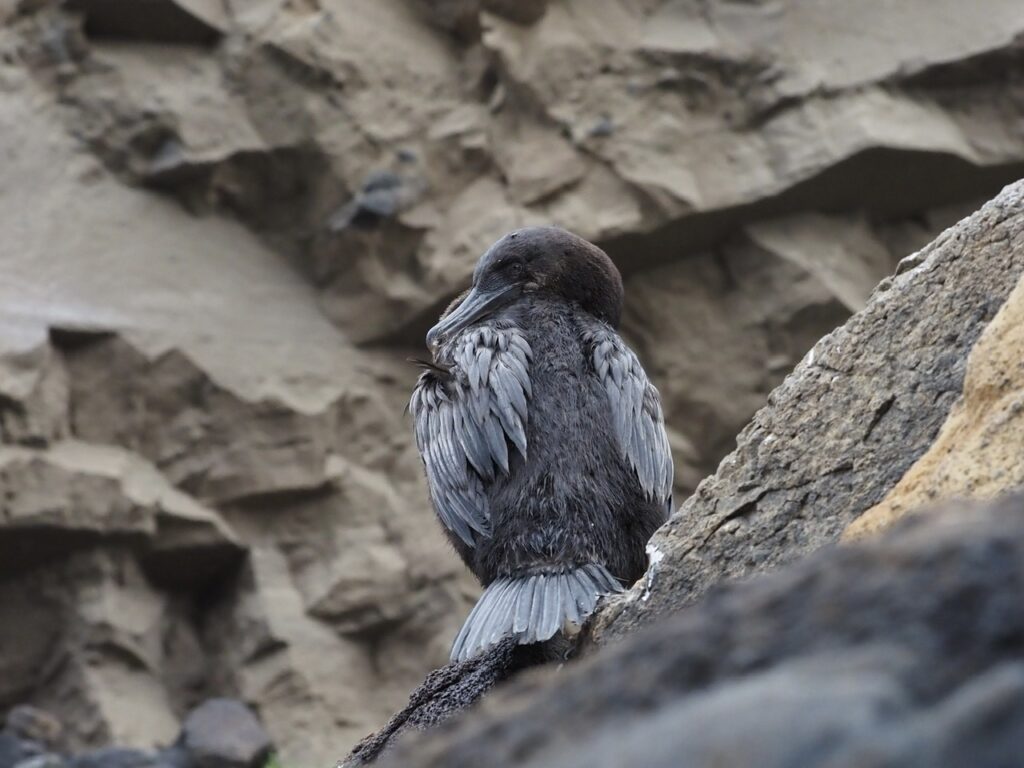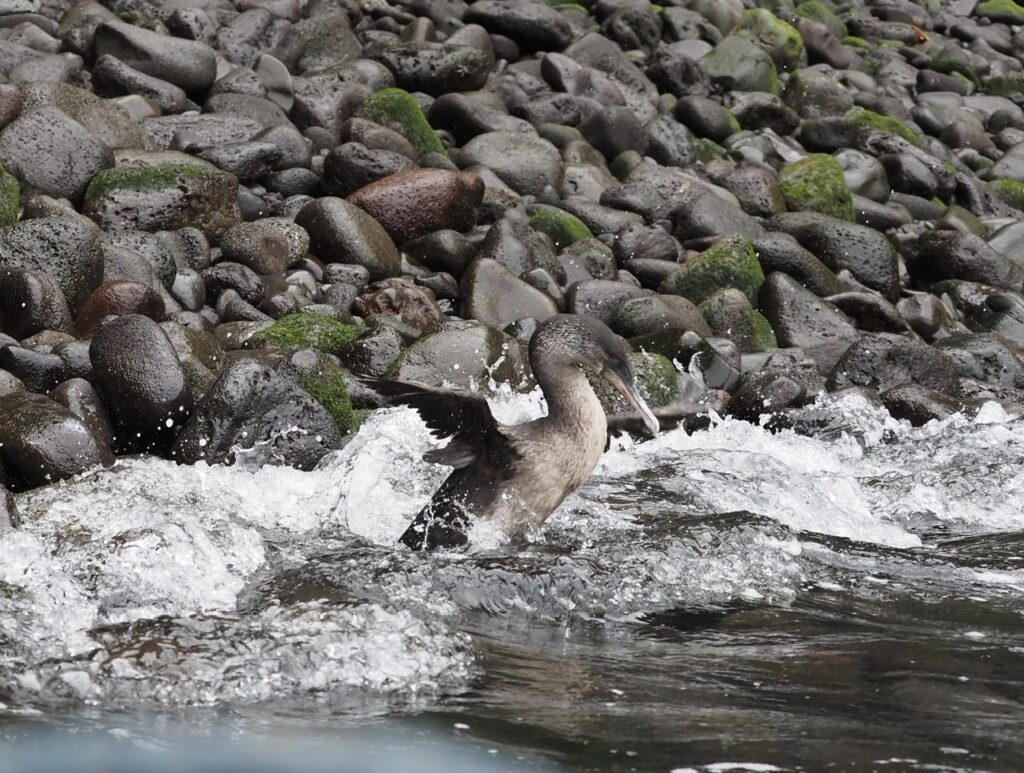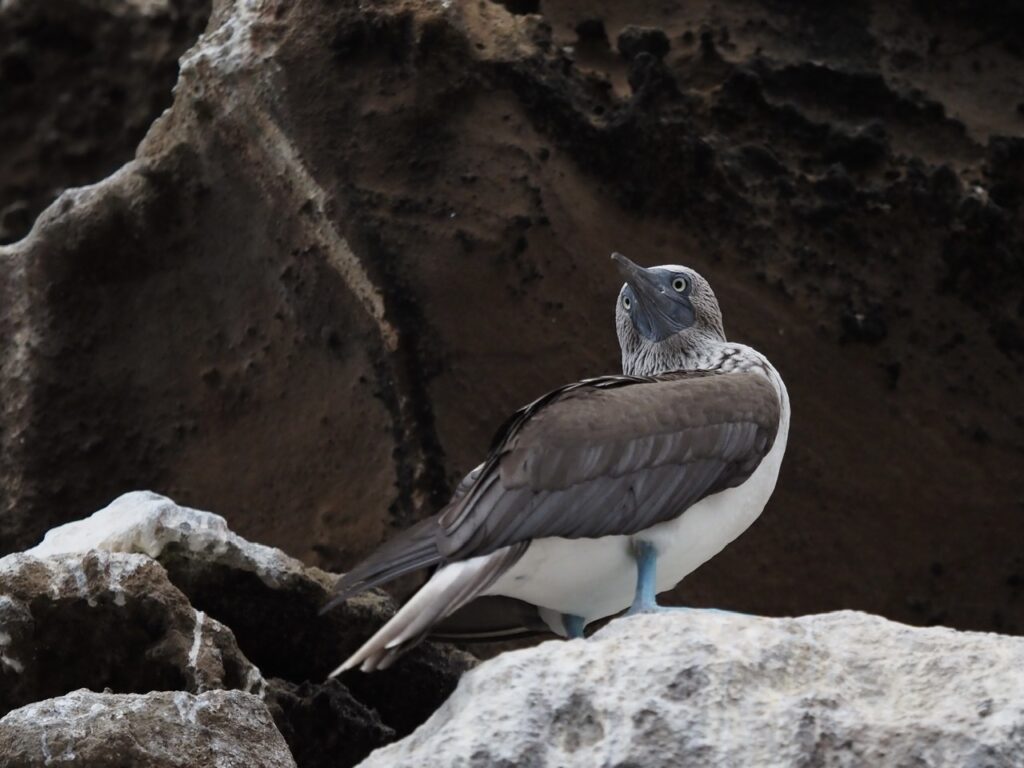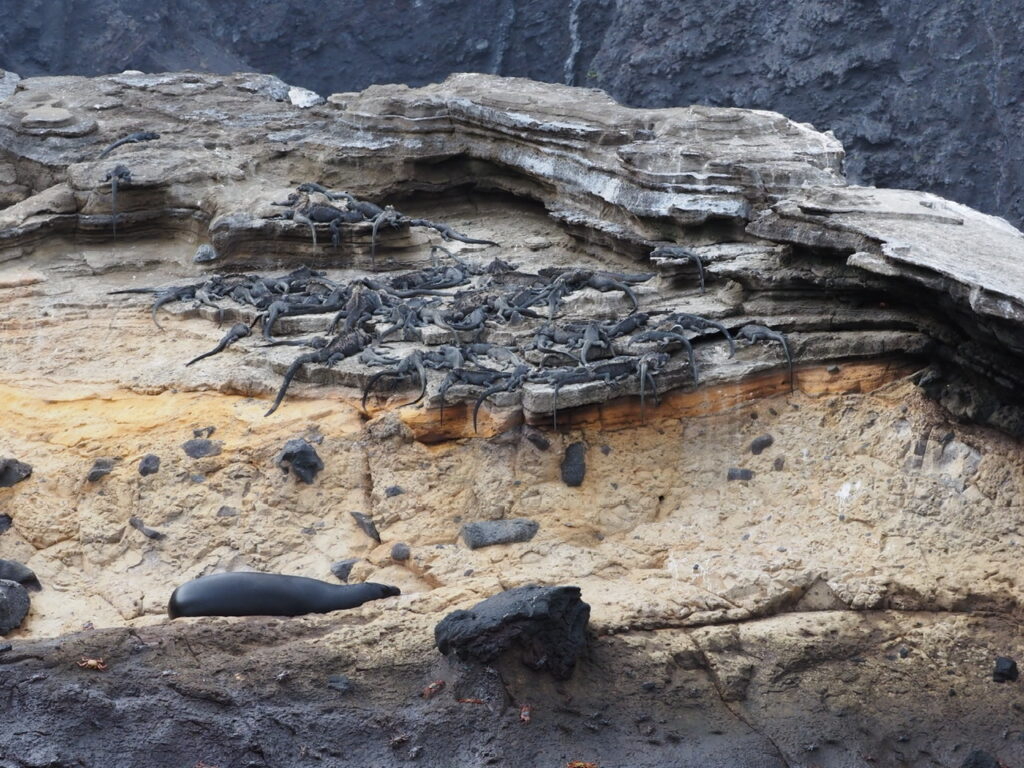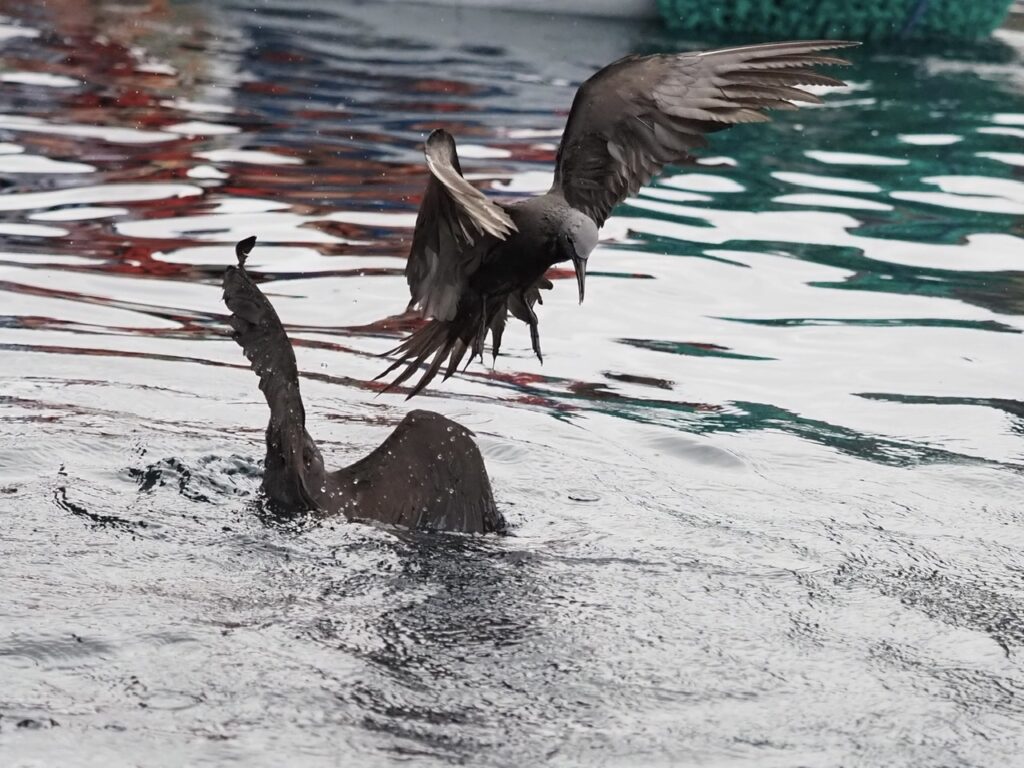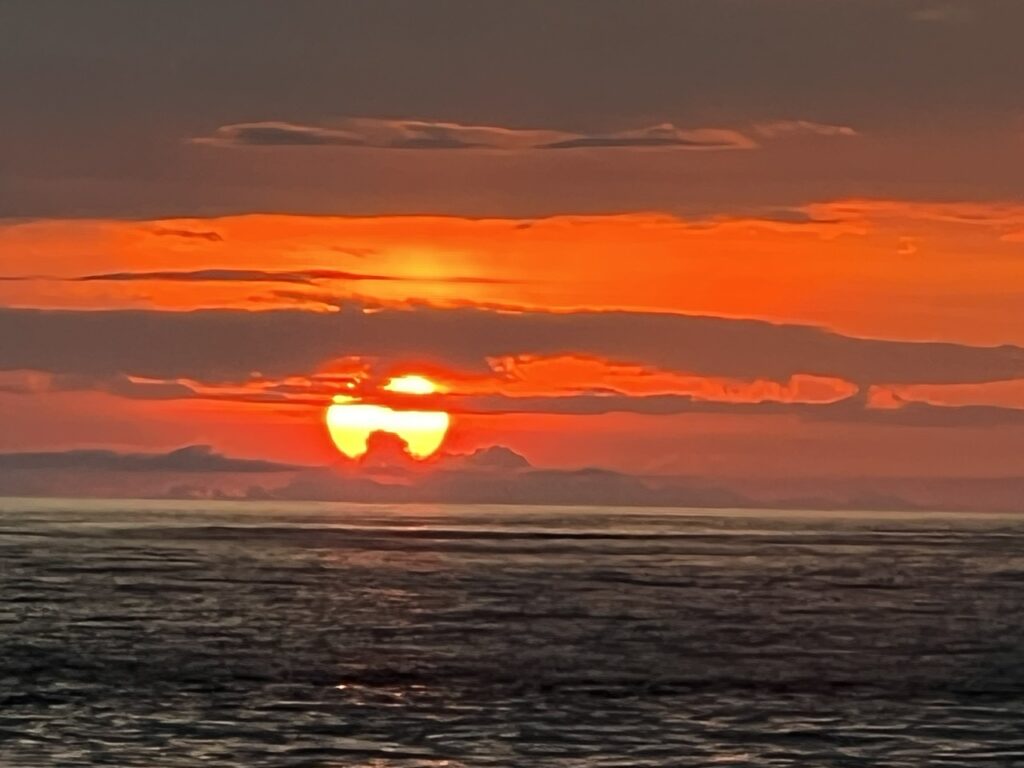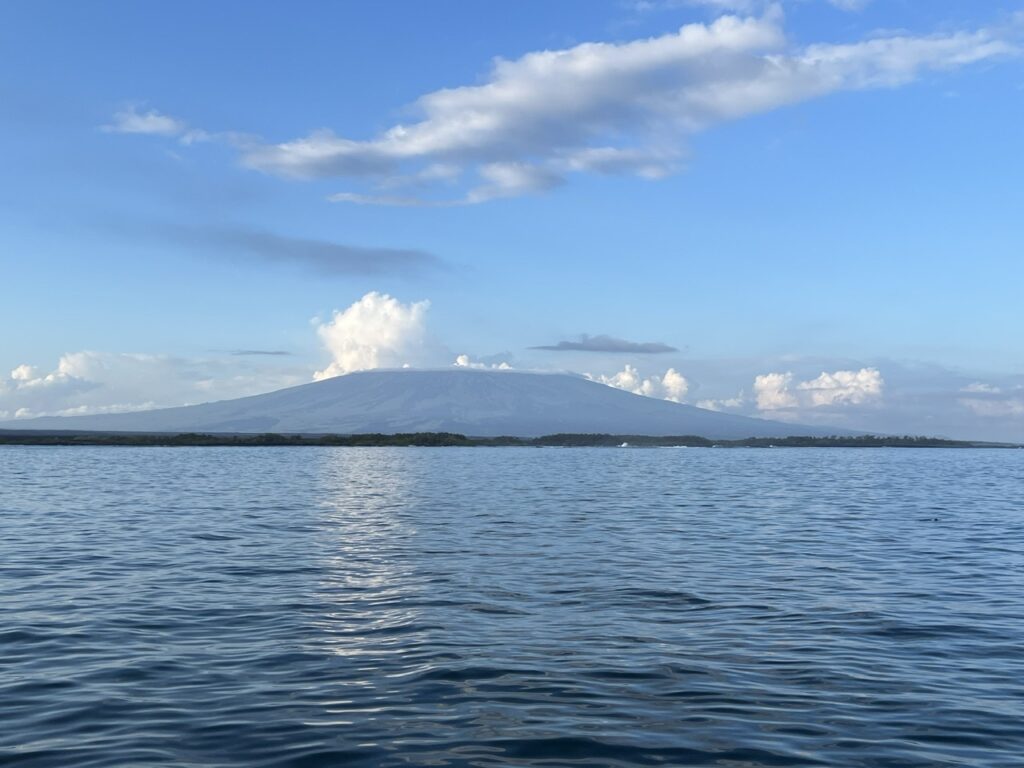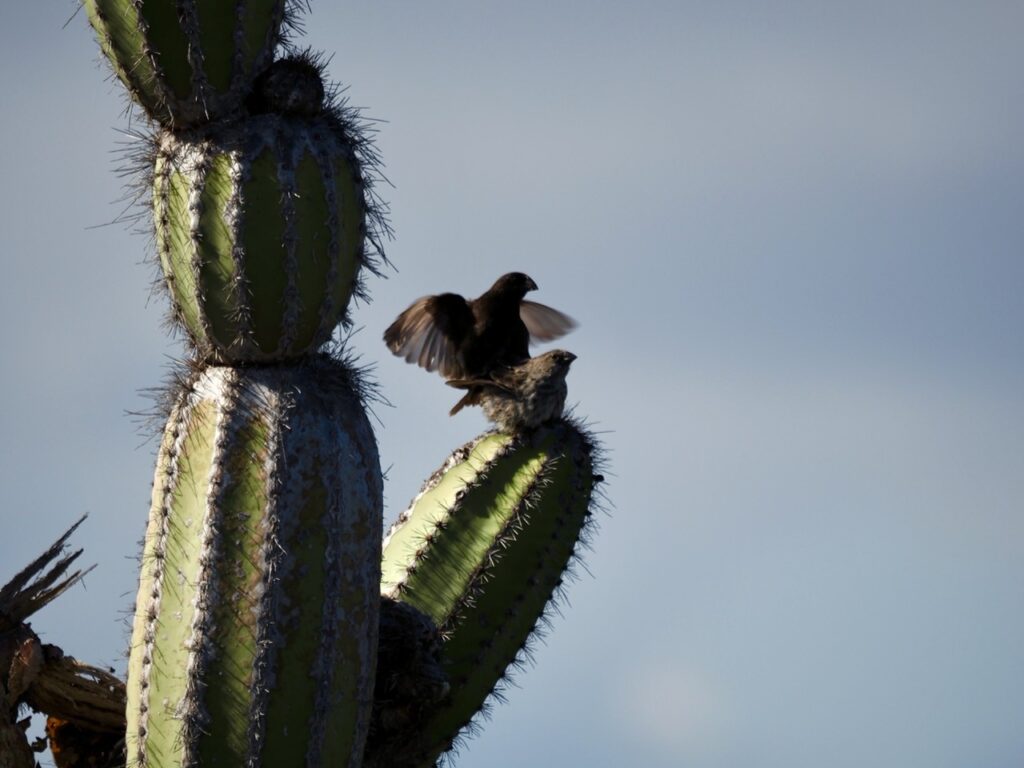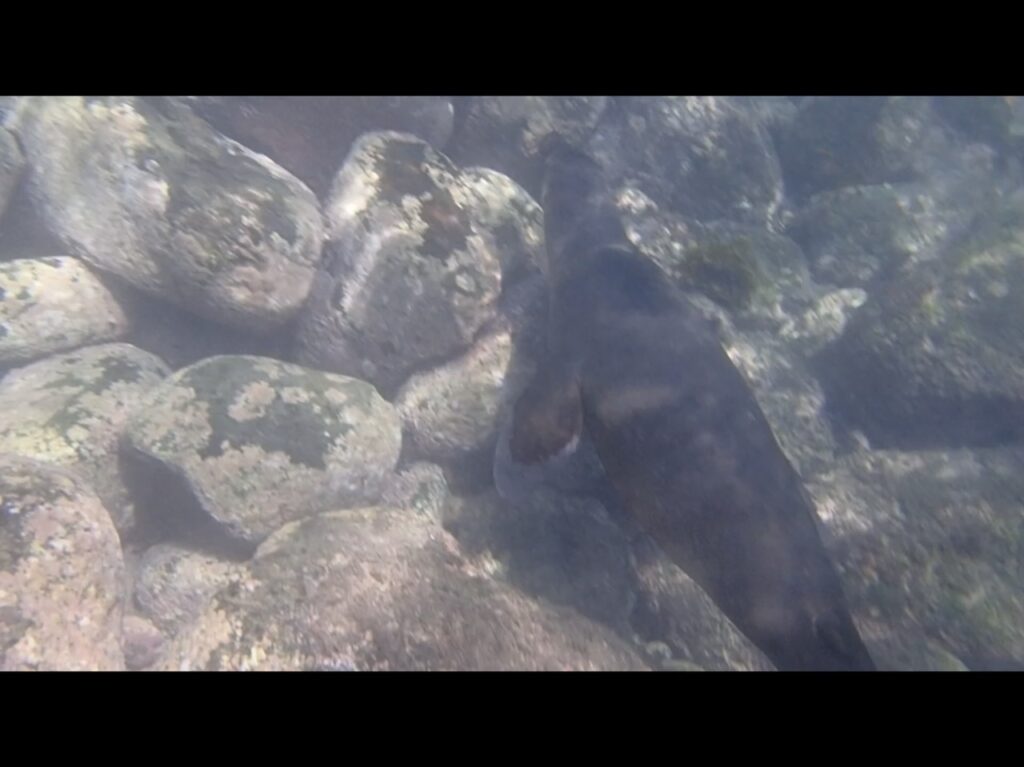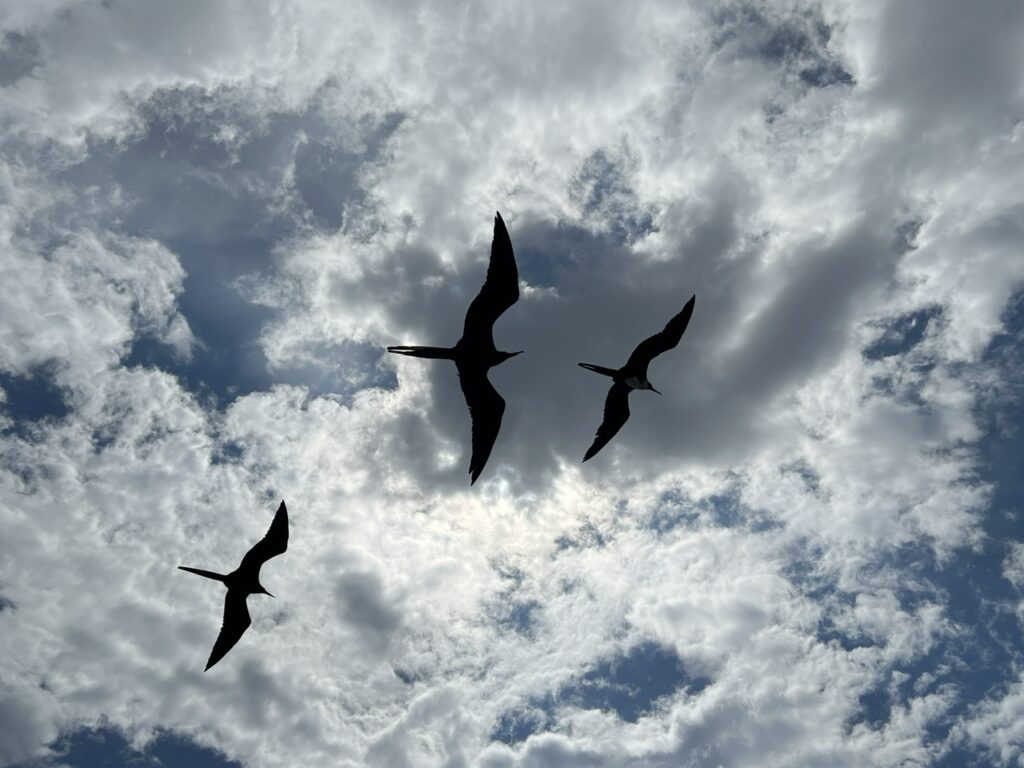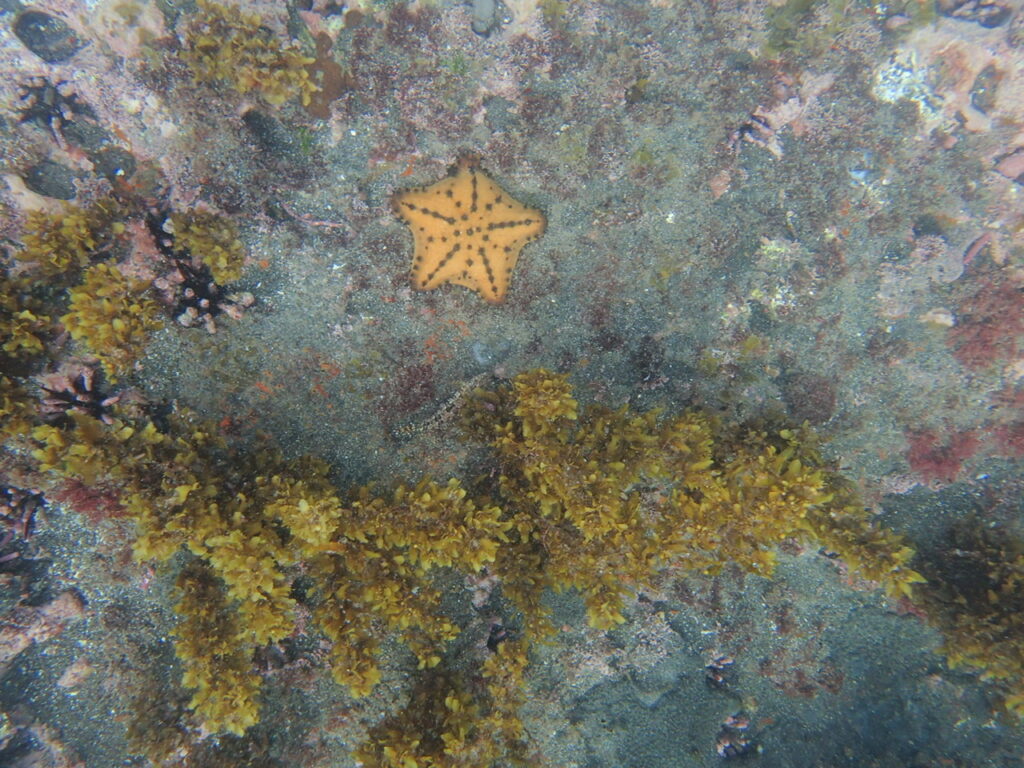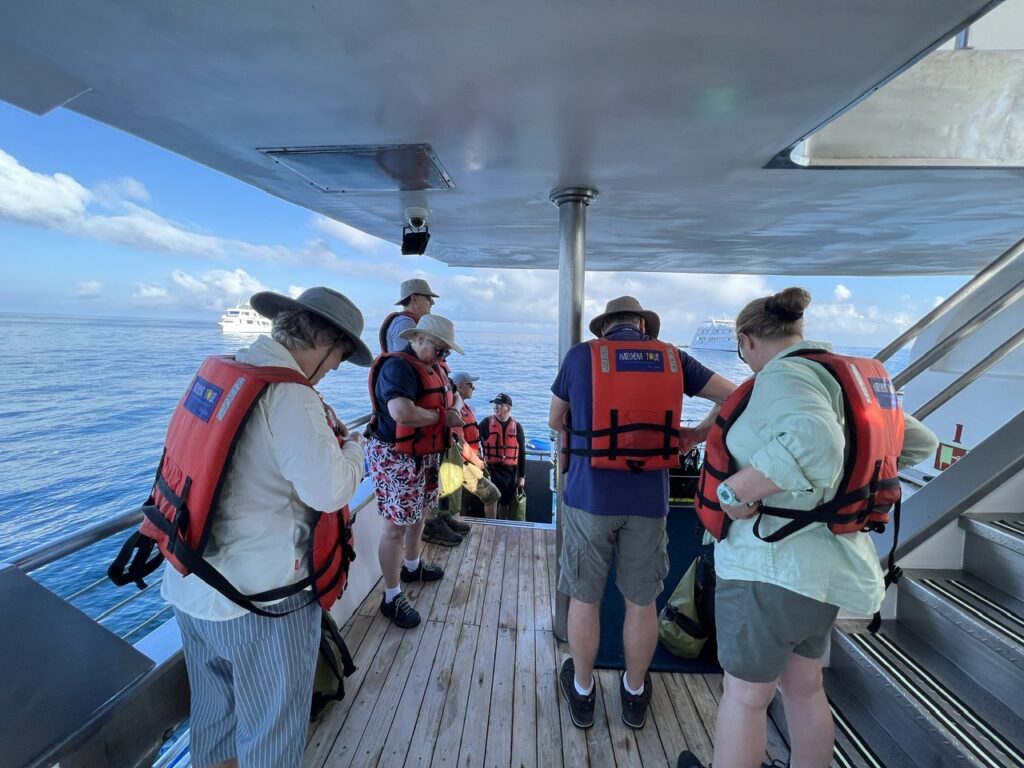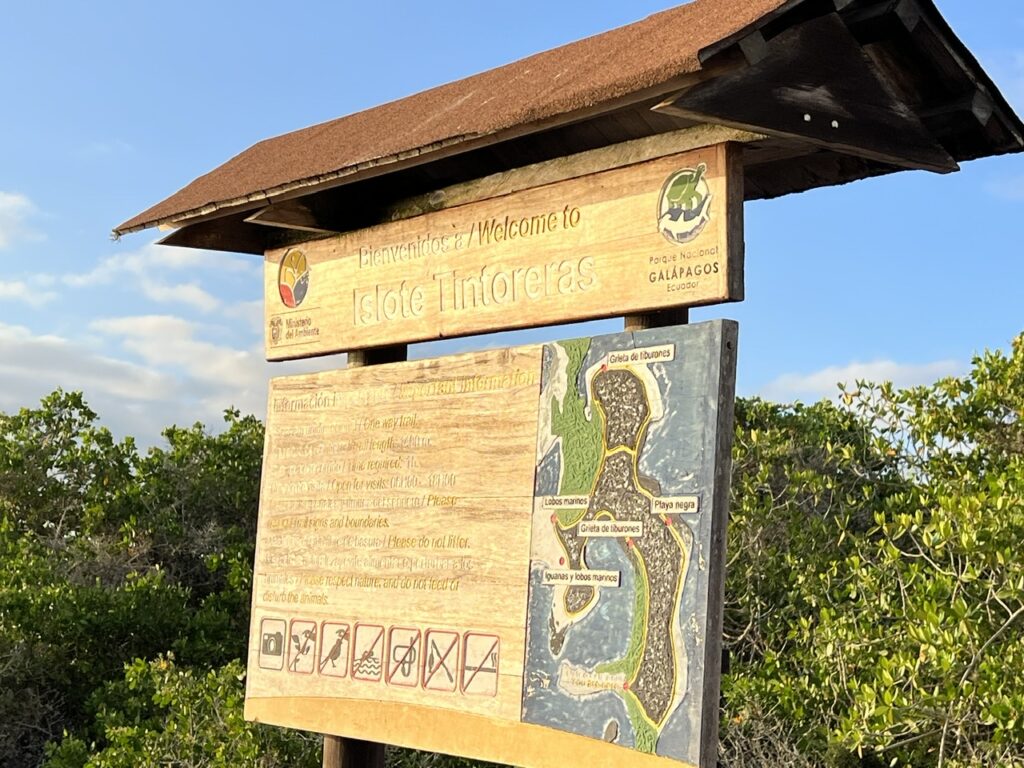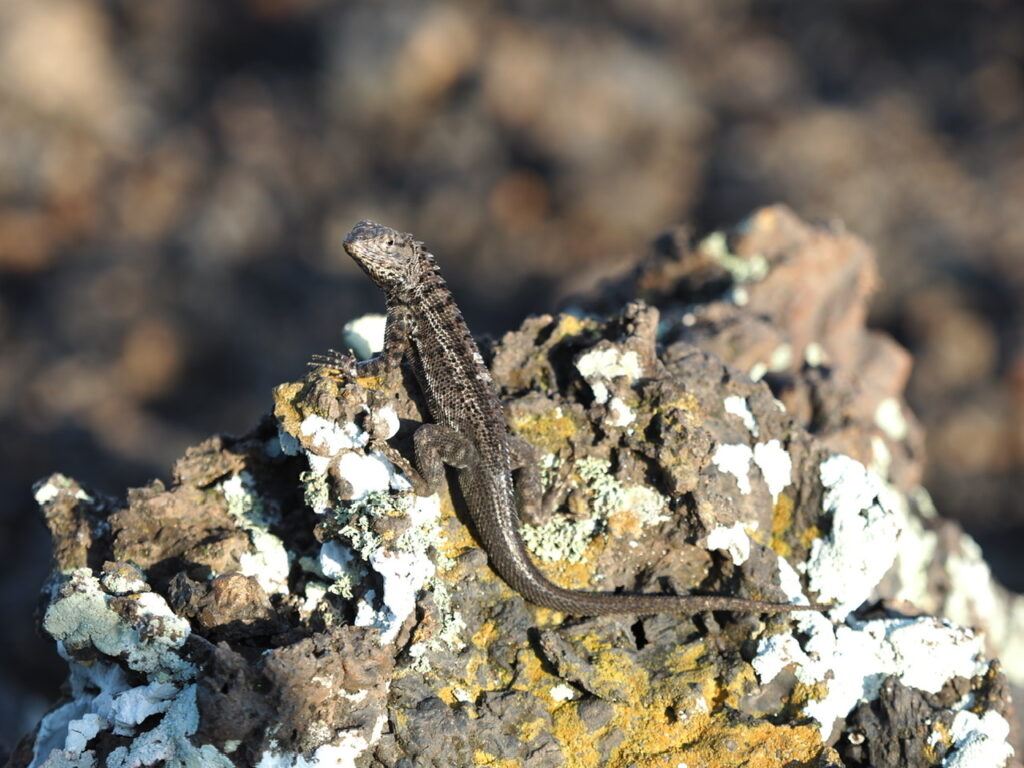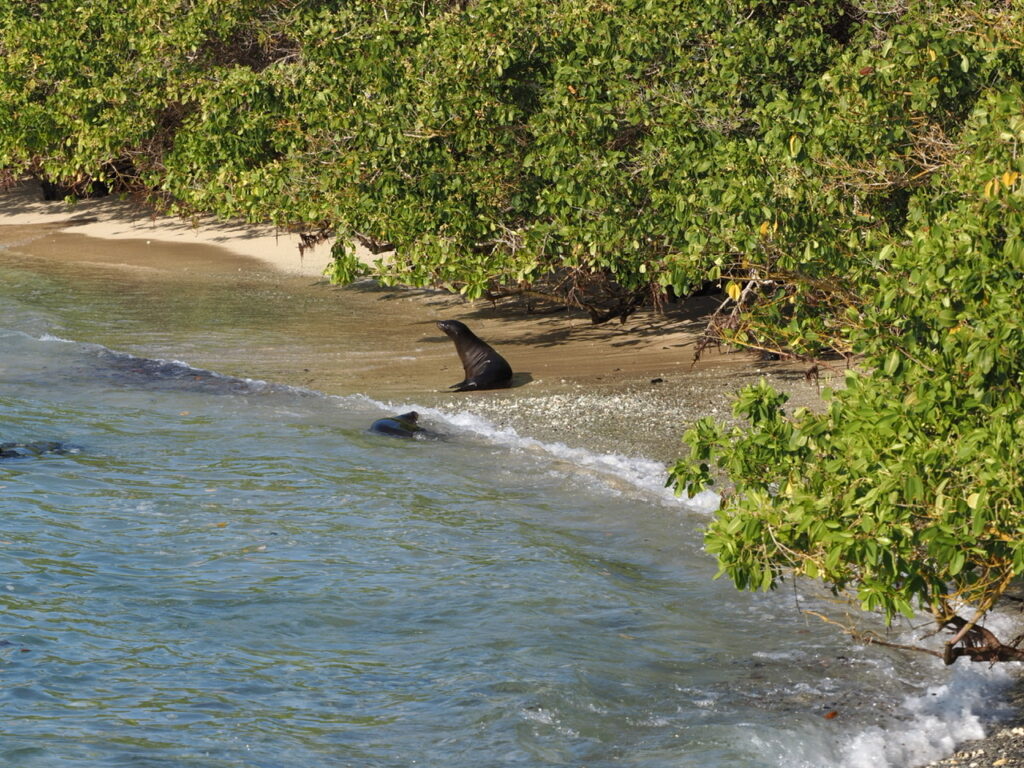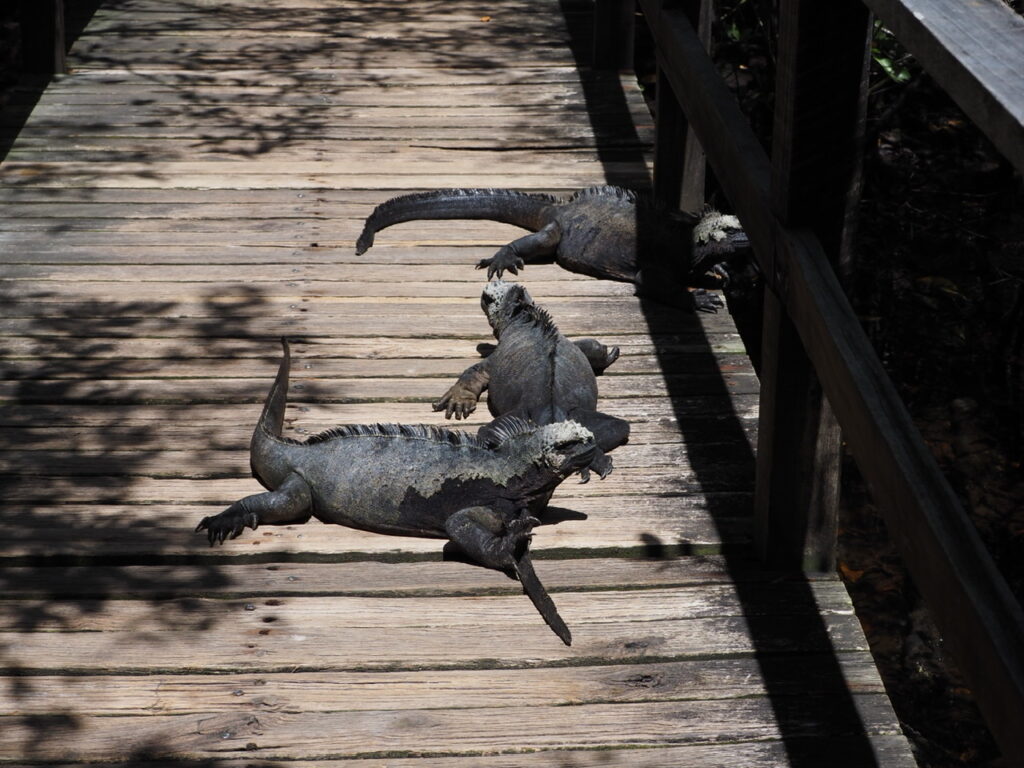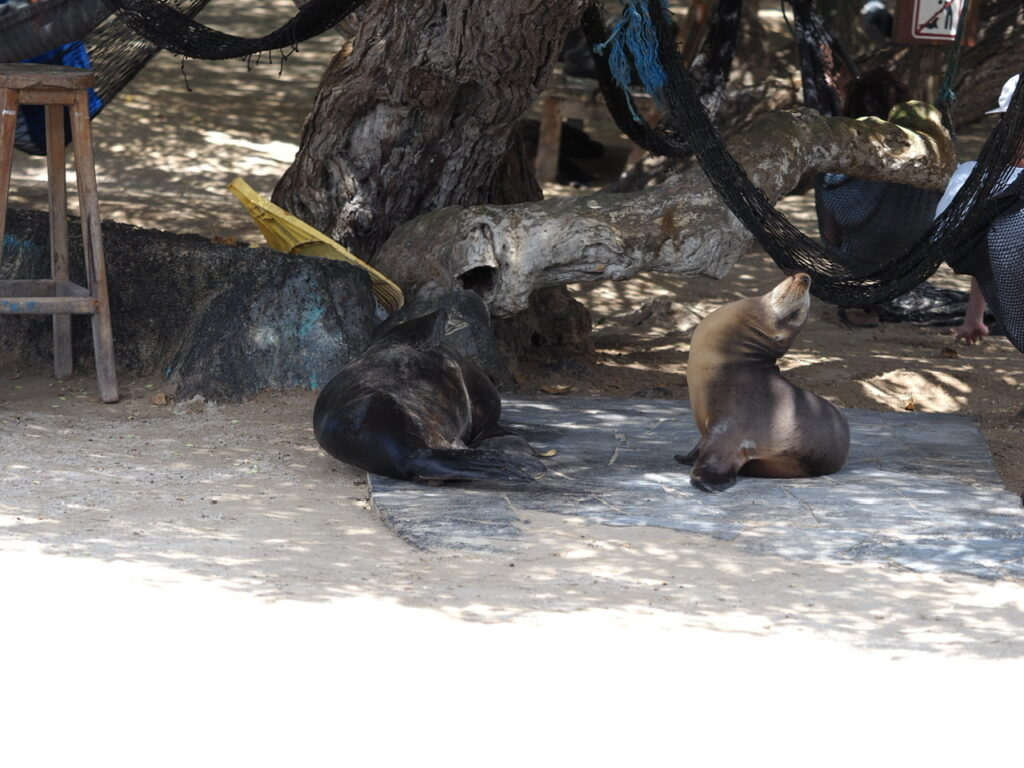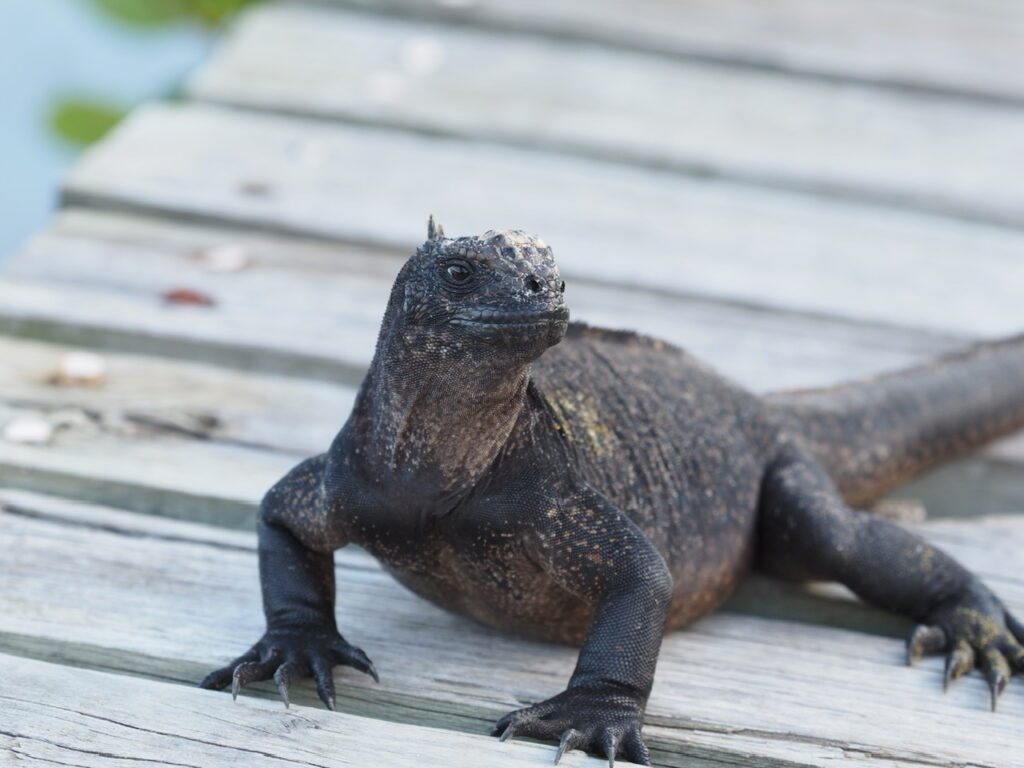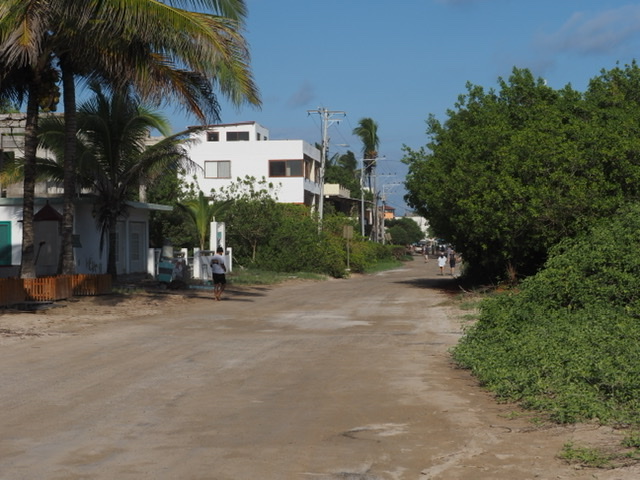
We go ashore on Rabida Island with red beaches and cliffs. There is a large pool and 20+ flamingos wade and sift the water for shrimp. I take what I think are good shots and then discover yet again that the camera end of the lens has fogged. I detach it and let the air dispel the ring of condensation. It only takes a few seconds and the quality of images is significantly improved.



There is a mocking bird in the bushes…

…and a juvenile hawk hiding low in a tree.



We make our way back along the beach and a pair of oysters catchers are feeding a chick on the shoreline. I sit down and keep still. The chick is curious and so close that I think it will peck at my toes. Too close for pictures at this stage!


We then snorkel along the rocks at the end of the bay. The fish life is good but this is not the best snorkel here and the current on the swim back was quite strong. On entry a cloud of comb jelly fish hang below the surface. They are benign and do not sting.
We then make passage to Chinese Hat. This is an island created as a vent from the main volcano and its shape is indeed very much like a paddy planter’s hat.

We make a wet landing on white coral sand. Two sea lions laze and are occasionally cooled by the lapping waves.

A third sea lion comes ashore. It is inquisitive and makes its way towards us. It takes a liking to me. I am crouched down and think I will have the most amazing shots as it approaches within 3 feet of me. But guess what? The flipping lens has fogged up again and I dare not move to clear it. Frustrating. This is not to say that I did not take some decent shots however. Just not as incredible as they could have been.

We walk along the shore. It is a truly beautiful place. There is loads of coral washed up on top of the lava.

Up until the late 1980s there was a thriving coral reef here. However there was an extreme El Niño then and the coral has died. I did see tiny corals regrowing in one or two spots, which is encouraging, but there is a long way to go.


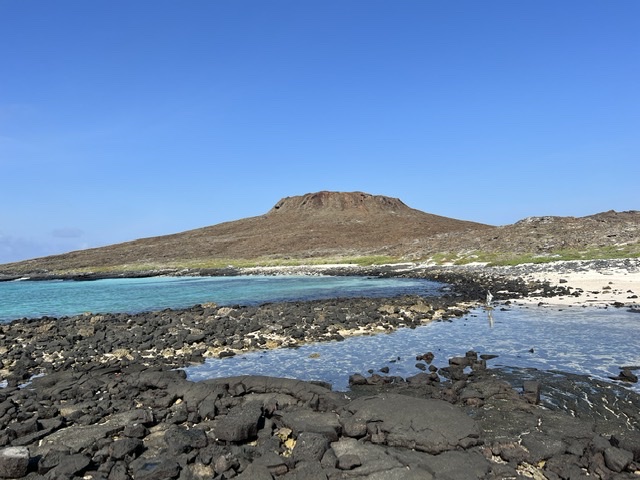
We walk across the jet black eroded lava and watch a heron stalking fish in a rock pool and a marine iguana sunning himself on the rocks next to a sleeping sea lion.

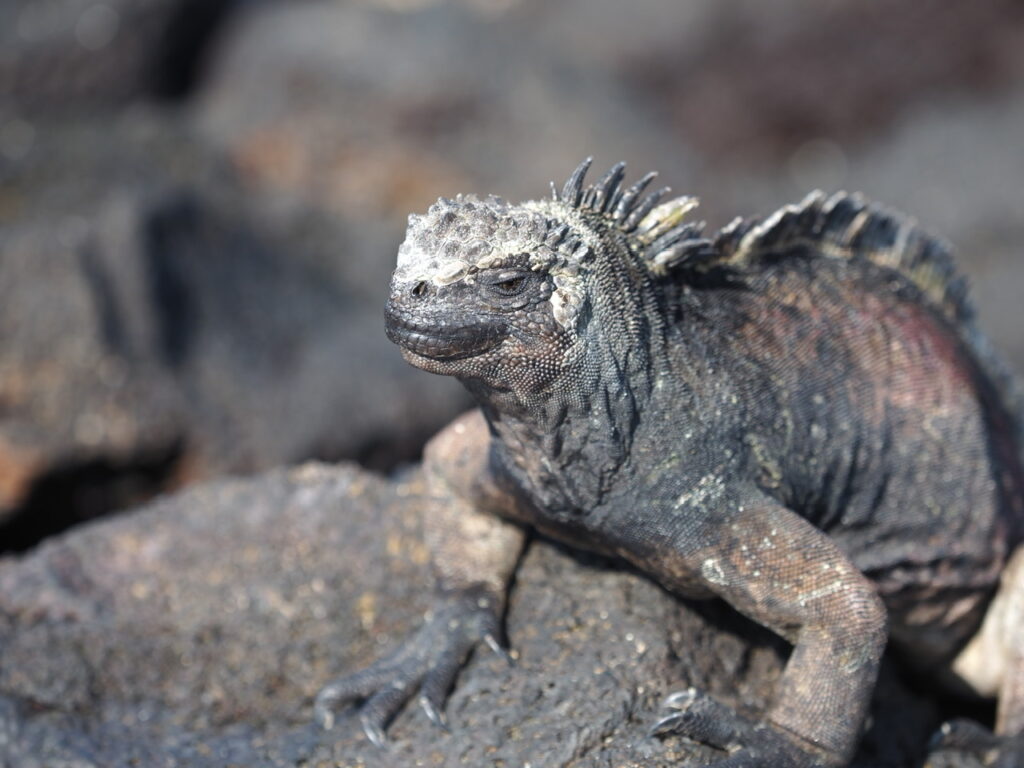

The snorkelling here was incredible. There was little current and good visibility. Four penguins pretty much swim into me….


I see a large white tip shark…..
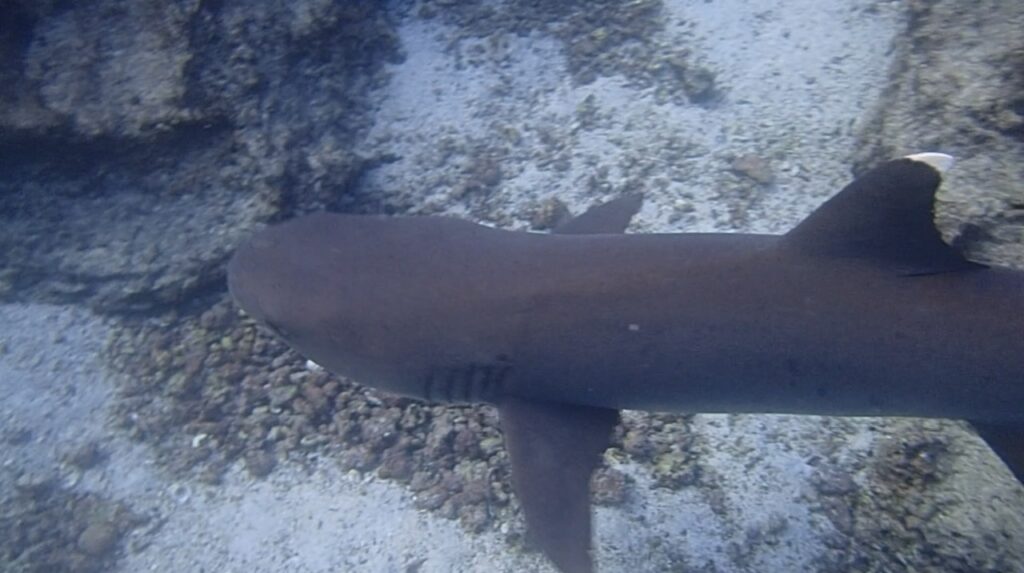

…but abort following him because an eagle ray has swum below me going in the opposite direction.

I then encounter the penguins again….
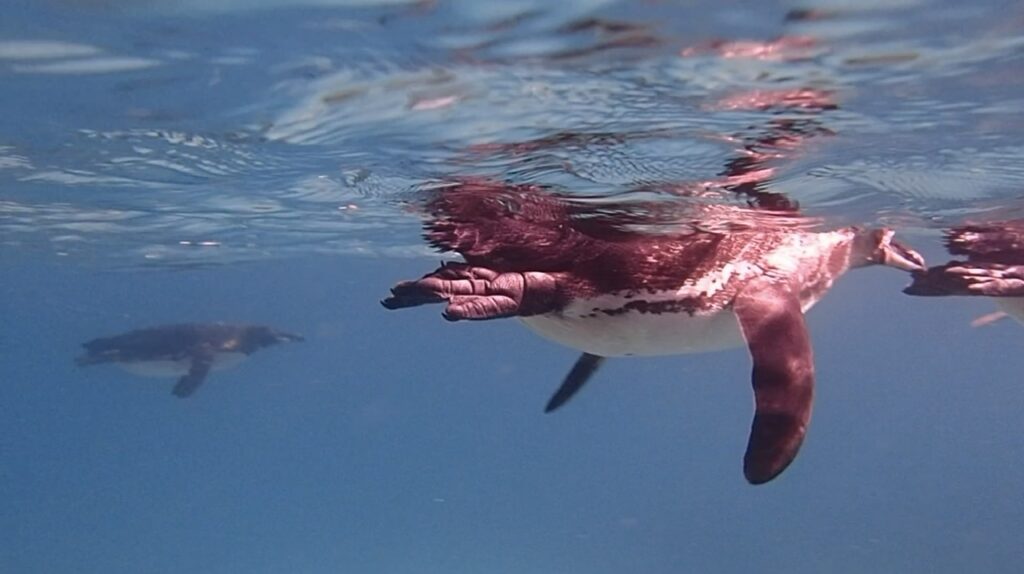

….and find four huge white tip sharks sleeping under a ledge. Just wonderful. It is hard to describe just how special these encounters are. I have snorkelled for years but never experienced anything like this.
This is the last night for everybody else on the boat and they will leave tomorrow. We are lucky and have two more circuits to make of the North and South islands and I am sure these will be just as varied and amazing as the Western Circuit. The crew all line up for a farewell drink. Kerli, the barmaid, has made a revolting green concoction.

The saving grace is that she is very economical with the quantity in each glass, so it’s easy to down it in one ghastly gulp. This is penny pinching on a ridiculous scale. The welcome drink was no better and also served as a minuscule measure. It sends a really negative message. Why on earth the crew cannot buy a couple of bottles of cava and give us all a full glass of something drinkable is beyond me. Likewise running out of white wine is not OK. This was not a cheap cruise by any means.



